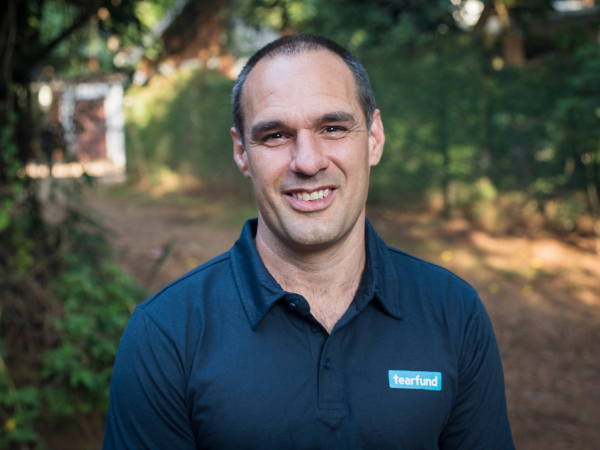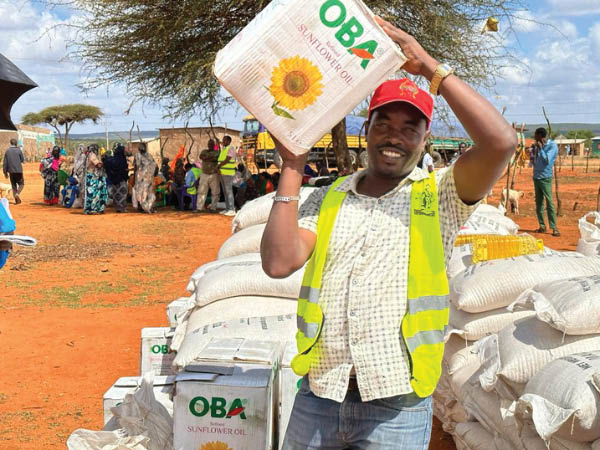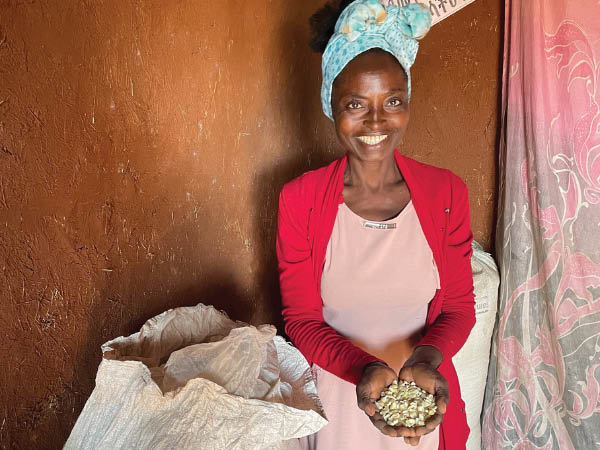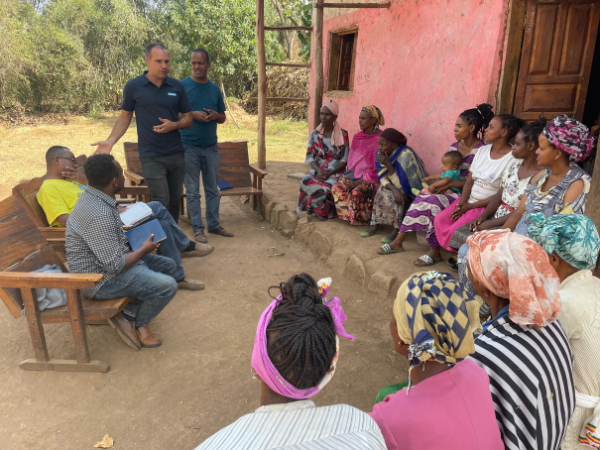Are we making progress in East Africa?
9222 0
Written by Tim Manson
After my visit to Ethiopia to see the response being made by our partner to the East Africa Hunger Crisis, I was reminded of a question I’ve been asked many times: “haven’t we seen this before?” Tearfund's Facebook posts on the East Africa Hunger Crisis has some comments that are more direct. Someone wrote: “This same story has been recurring all my life”, another “Why should we spend money on a crisis that keeps recurring?”
I’ve been tempted to dismiss these or feel angry. I was moved to tears at several points on my visit as I heard first-hand about the level of suffering. One woman shared that each day her kids come home from school and ask for food, but she has nothing to give them. Death is at their doorstep. And in New Zealand, some people are bored with the story.
But I think at Tearfund we have a responsibility to engage with these questions, not dismiss them and open the dialogue rather than to shut it down. So, as I embark on the marathon trip home, I’ve decided to put down some of my thoughts—partly in response to these questions, but also to help me process what I’ve just seen.
Will you help save lives by donating to our East Africa Hunger Crisis Appeal?
Donate

Tim Manson, Tearfund's International Programmes Director. Photo: Tearfund New Zealand
1. Haven’t we seen famines in East Africa many times before?
In short, yes, we have. As I travelled through the capital Addis Ababa, I saw the grain silos from the 1985 famine. At that time, a terrible famine resulted in the deaths of nearly one million people— mostly in Ethiopia. Many of us remember the very high-profile Live Aid campaign associated with that famine. Since then, there have been three official famines in the same region, and right now, we’re on the verge of another. Currently, 50 million people are categorised as being severely food insecure by the World Food Programme. According to the Global Food Insecurity Index, some southern regions of Ethiopia and much of Somalia and Kenya are at a Level 4 (Emergency) setting— one level away from an official famine declaration. Many people in the Horn of Africa have already died due to a lack of food, including some members of a village I visited recently.
But, despite these previous examples, it's important to also point out that this current global hunger crisis (with an epicentre in East Africa) has some new drivers. The war in Ukraine has interrupted the global grain supply pushing the price of some food staples up and global inflation levels have jumped dramatically in the past couple of years. The global pandemic has also contributed to rising costs and food supply issues. Local conflict (Somalia, South Sudan and Northern Ethiopia) has also interrupted access to some regions and diverted aid.
On top of this, East Africa is facing the worst drought in 40 years.
One 60-year-old man told me that he hasn’t experienced a drought of this length or severity in his lifetime. There have been three years of barely any rain. Livestock have died in big numbers and there have been multiple consecutive failed crop harvests. We cannot say for certain with a one-off event like this, but it is likely that this extreme drought is driven by climate change. Subsistence farmers in East Africa are at the coalface of this very real crisis. It’s fair to say that people in extreme poverty have less margin to cope with shocks like these and the situation right now is critical.

A Food Distribution Centre in Ethiopia. Photo: Tearfund Canada
2. Is any progress being made?
It can be easy, particularly for aid organisations trying to raise money, to present a narrative that is overly negative. But at Tearfund, we want to balance our expression of the dire situation being faced by many, with the progress that is being made on some of the world’s most complex development issues, including hunger.
Hans Rosling in his famous book, Factfulness, cites data showing that the proportion of people in the world who are undernourished has dropped from around 30% in the 1960s to around 10% in the 2010s.
Dialling back to the current hunger crisis, the last two famines in East Africa- (2002-03 and 2011-12) have seen more effective responses from the Ethiopian Government and international aid organisations. More recently in 2015, a severe drought pushed many to the edge of starvation, but a famine declaration was avoided through a large-scale, joint government and NGO response with emergency food aid reaching about 8 million people.
At Tearfund, we support local partners involved in both humanitarian and long-term development work. In times of emergency, it is vital to provide short-term relief. However, most of our partners are working on multi-year community development programmes. They endeavour to support communities to achieve sustainability so that when shocks come along, they do not need external aid, and can recover quickly.

Amareech. Photo: Tearfund New Zealand
While I was in Ethiopia, I saw a powerful example of this in action. I met a woman named Amareech who lives in Wolaita District. She married in 2008 and lost her husband in 2010, then gave birth to her only daughter a few months after his death. She was pressured by her in-laws to leave her land and child and move away.
But she decided to keep her daughter, stay on her land and work hard to take care of it herself. She faced severe poverty because she was alone, but she didn't want to become a beggar. Some neighbours and the church helped, but her life was extremely challenging.
Once, while she was on her way to the market, she saw a plot of mulch-covered land. She stopped and asked the farmer about it and learned that he was part of a farmer savings group and had received training in something called Conservation Agriculture (CA). She learned that it didn’t need much investment and it would produce better results. She started mulching and getting advice from this nearby farmer. He told her that he had been trained by Tearfund's local church partner. When our partner came back to that community, Amareech signed up and received training in CA and was linked up with a savings group.
Over the past decade that she’s been in the programme, the results have been outstanding. Before joining, she described herself as scared, afraid, stressed and poor. Ostracised by others, her life was based on daily subsistence, enough for one day at a time, and some days, she had no food for herself and her daughter.
Now she consumes what she needs and sells extra, and she is respected by her neighbours. Other farmers in her village have seen the results and copied the conservation agriculture techniques adopted by Amareech. I spoke to a neighbouring farmer who said he had been sceptical until he saw that her harvest outperformed his significantly. He has since started mulching, has reduced tillage and has changed to more drought resistant crop-varieties.
Recently, there was a government assessment to identify the poorest of the poor during this current drought and she told me with great pride that she is not eligible for this support!
Amareech is one of 9,000 farmers in the project in this region. This is the work of the local church in action and the support of Kiwis like you that give to make it possible. What a privilege to support work like this and hear that her family is self-sufficient in the middle of a severe drought.

Tim talking to a Self Help Group in Ethiopia. Photo: Tearfund New Zealand
3. Why should we bother getting involved when it keeps happening?
I believe that as followers of Christ, we are called to engage in messy, difficult situations that sometimes don't have clear resolutions. Issues such as modern slavery, generational conflict and famines are complicated and have multiple drivers. Yet, our mandate is to retain a measure of determination that can withstand some disappointment.
After having just visited a country on the verge of famine, I feel strongly that “donor fatigue” or frustration at the lack of progress, pales into insignificance when compared to the depth of suffering experienced by a malnourished child. Have we seen this before? Yes. Will we see it again? Probably. But we should respond anyway.
Will you help save lives by donating to our East Africa Hunger Crisis Appeal?
Donate